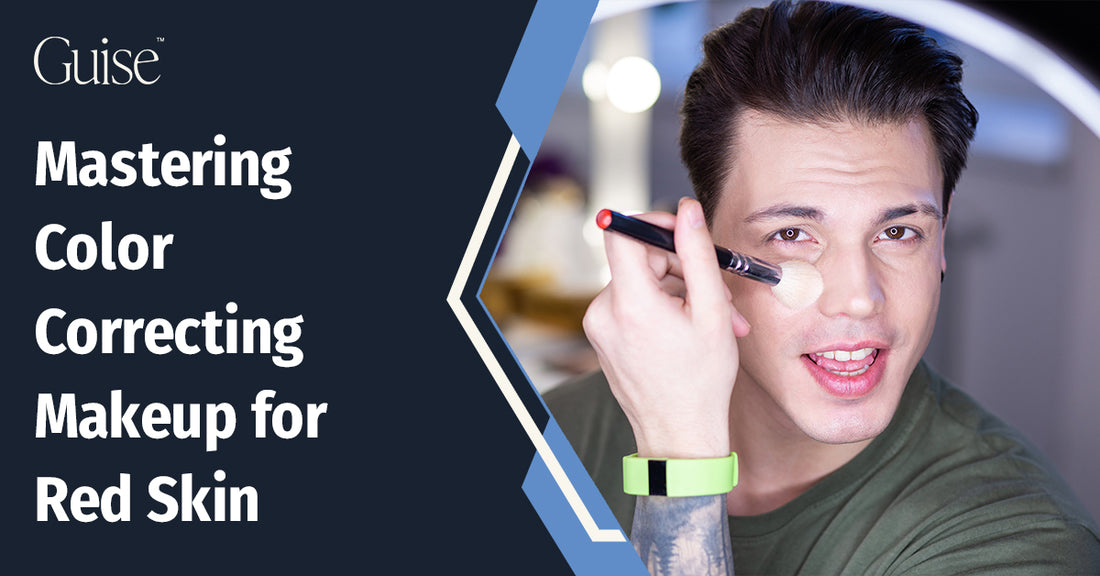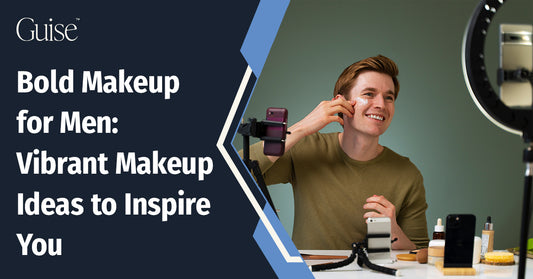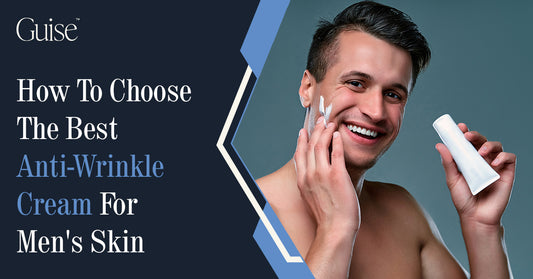Having red skin can be challenging to manage, especially when applying makeup. Various factors, such as sunburns, rosacea, and allergies, can cause redness in the skin. While there are many products out there that promise relief from redness, not all of them work effectively or provide long-term results. Fortunately, with simple tips and tricks, you can master color-correcting makeup for red skin and achieve a flawless look every time.
Here, we will discuss how to make makeup artists properly use color-correcting products to reduce redness in your complexion while enhancing its overall appearance. We'll also advise which colors work best for specific types of redness so you professional makeup artists can create the perfect canvas for your makeup routine.
Understanding Color Correcting Makeup
Color-correcting makeup is a way to get rid of unwanted tones and hide skin problems like redness, dark circles, and hyperpigmentation by using different shades. These shades are typically "the opposite color" to the color on the color wheel, and they work by canceling out the unwanted color to create a more even skin tone. The key to successful color correcting is selecting the right shade for your skin concern and applying it in a way that it seamlessly blends with your foundation and concealer.
Determine the Source of the Redness
The first step in color-correcting for red skin is to determine the cause of the redness. Is it from sunburn, rosacea, or allergies? Once you have identified the redness's source, you can select a shade that is best for the second skin, will minimize redness, and suit your needs.
Redness on the skin can be caused by a number of things, such as rosacea, acne, allergies, sunburns, and sensitivity to certain products. Rosacea is a long-term condition that affects the face. It usually causes the cheeks, nose, chin, forehead, and eyelids to stay red. Acne can also make your skin red because swollen pimples can make your skin look blotchy or uneven with red spots. Allergies and sunburns are common causes of redness; however, these typically resolve after a few days. Identify the cause of the redness before selecting a color corrector to address the specific concern.
For example, a green color corrector can get rid of redness caused by rosacea or acne, while the opposite color, a red-tinted yellow color corrector, can get rid of redness caused by sunburn or irritation.
Types of Color-Correcting Makeup
Once you know what's making your skin red, you can choose the right color-correcting makeup for your needs. Various types of products are available on the market to cover redness, such as:
- Green color corrector - This is typically used to neutralize redness caused by rosacea or acne.
- Yellow color corrector - Yellow color correctors are usually used to counteract redness resulting from sunburn or irritation.
- Peach and orange hues corrector - These shades reduce the appearance of dark circles, hyperpigmentation, and discoloration.
- Purple color corrector - Removes yellow undertones and brightens sallow skin tones.
- Red or pink color corrector - Conceals blue- or green-toned discoloration on the skin, such as veins or bruises.
Choose the Correct Color Corrector
Once you have identified the source of the redness, the next step is to choose a color corrector that will help conceal it. As was already said, unwanted red hues will be taken away by shades that are the opposite of those on the green color correctors and color wheel. The following are the factors to consider before choosing the right color corrector for your red skin:
Assess Your Skin Tone and Redness
Before choosing a color corrector, it's important to look at your skin tone and how red it is. A green color corrector works best for lighter skin tones and for fair to medium skin tones with mild to moderate redness. For deeper skin tones, peach or orange color correctors can neutralize dark spots and hyperpigmentation.
Determine the Type of Redness
Different types of redness require different color correctors. For acne scars, for example, a green color corrector works best on redness caused by rosacea or acne, while the yellow color corrector effectively counters redness caused by sunburn or irritation.
Selecting the Right Shade of Color Corrector
Choosing the right shade of color corrector is essential for a seamless blend. Select a color corrector that is one shade lighter than your foundation's green concealer. This will ensure the color corrector blends seamlessly with your foundation and concealer.
Consider the Formula and Texture
Color correctors come in different formulas and textures, including liquid, cream, and stick. Choose the best creamy formula and texture for your skin type and concerns. For example, a liquid color corrector is ideal for oily skin, while a cream or stick color corrector is better suited for dry skin.
Test Before Application
Testing the color corrector on a small skin patch before applying it can help ensure you get the right shade and formula of color correcting concealer. This will also help you determine if the color corrector works well with pink concealer for your skin type and concerns.
Prepare the Red Skin for Color Correcting
It is important to prepare the skin to make sure your color-correcting makeup looks natural. Start by following the below steps:
Cleanse the Skin
First, it is important to thoroughly cleanse the skin before applying any color corrector. This will help remove oil, dirt, and makeup and create a fresh base for the product. Cleaning your skin also helps remove dead skin cells that could interfere with the color corrector's effectiveness. To ensure optimum results, use a gentle cleanser.
Moisturize the Skin
Applying a lightweight moisturizer is essential to help ensure your color-correcting makeup looks natural. A lightweight moisturizer will help hydrate and nourish the skin, creating a smooth base for the product. Additionally, it helps lock in moisture and keeps the skin from drying out throughout the day. Furthermore, it helps create an even canvas, making it easier to blend the color corrector.
Apply Eye Cream
If you have dark circles or discoloration under your eyes, you need to use eye cream to get rid of puffiness, cover dark circles, and make the under-eye area look brighter. Most eye creams have hydrating ingredients like hyaluronic acid and ceramides that nourish and plump the skin, making it look healthier and younger. Additionally, eye creams also help blur fine lines and wrinkles.
Prime the Skin
A face primer should be used to achieve a smooth finish and ensure that your color corrector stays on the skin for longer. Primers help blur out any imperfections, such as pores and fine lines, creating an even canvas for the color corrector to be applied on. The primer helps create a barrier between the skin and makeup, reducing the risk of smudging, fading, and creasing. Primers also help create a natural finish and make the color corrector look more natural on the skin.
Let the Products Settle
To get the best results from a color corrector, it's important to let the moisturizer and primer sink into the skin before applying them. Giving your skin a few minutes will help create a smooth base for the color corrector or product and prevent makeup from sliding off. This will also help create an even canvas for easier blending of the color corrector.
Apply the Color Corrector
When your skin is prepped and primed, you are now ready to apply the color corrector. Begin by following these guidelines:
Dot the Product on the Skin
Start with the eye bags and dot the color corrector on the areas that need correction. For example, if you want to target dark circles, dot the peach corrector product on the eye circles and all corners of the eyes. If you are targeting redness, dot the product on any red or inflamed areas.
Blend the Product
Once you have applied the product, blend it out with a damp sponge or brush. This will help the color corrector blend in with the skin and look natural. Make sure to blend it out in circular motions, working outward until there are no visible lines or streaks.
Set the Color Corrector
To help the color corrector stay in place throughout the day, it is important to set it with a setting powder, such as translucent powder. This will help prevent creasing and smudging while also locking in moisture and ensuring the product stays on longer. Additionally, setting your makeup also helps prevent oil buildup on the skin.
Finish with Foundation
Apply a thin foundation layer over the color corrector to complete your look. This helps make sure that your makeup looks natural and seamless. Its lightweight formula also ensures better coverage, allowing you to achieve an even complexion. You can also use powder as a final step to set your makeup and ensure it lasts all day.
Achieve a more flawless skin complexion with a color corrector. With some practice, you'll be able to master the art of color correction in no time!
Extra Tips and Tricks for Covering Red Skin
Here are some extra tips and tricks for color-correcting makeup for red skin:
Select the Appropriate Coloring
Make sure to choose a color corrector that matches your skin tone. For example, if you have fair skin, choose a green color corrector with a light green tint. If you have darker skin tones, choose a green color corrector with a deeper green tint.
Don't Overapply
The key to color correction is to use the right amount of product and blend it out properly. It is important to apply only a small amount of color corrector to the areas of the base makeup that need it, then blend it well for a natural finish. Too much product can result in an unnatural, cakey look.
Blend Out the Edges
To ensure that your color corrector looks natural, make sure to blend out the edges before applying foundation. Use a damp beauty sponge or brush and use circular motions to blend out the product until there are no visible lines. This will help create a flawless base for your foundation.
Use Color Corrector Sparingly
Color correctors should only target specific areas of discoloration on the face, such as dark circles, redness, uneven pigmentation, and age spots. It is not meant to be used all over the face – it should be applied sparingly and only exactly where needed.
Use a Color Correcting Palette
If you have multiple areas of redness on your face, a color-correcting palette with multiple shades is a great way to address each area. A color-correcting palette typically contains shades of green, yellow, peach, purple, and orange for targeting different discolorations in the skin. Green helps to neutralize redness, yellow conceals dark circles, peach helps to even out skin tone, purple reduces dullness, and orange is a great way to brighten the complexion.
Experiment With Different Techniques
Everyone's skin is different, so finding the right color-correcting technique for you may take some trial and error. Experiment with different products and application methods to find what works best for your skin. Remember that practice makes perfect – so don't be afraid to experiment and find the best color-correcting routine!
Transform Your Routine With Guise's Color Correcting Products
Redness in the skin can be difficult to deal with, but it doesn't have to be. With the right color-correcting product from Guise, you can achieve a flawlessly even complexion and reduce redness in your skin.
Guise's skin care and products are created with high-quality ingredients that are gentle on the skin and provide long-lasting coverage. Shop now to find the perfect color corrector for your skin.





